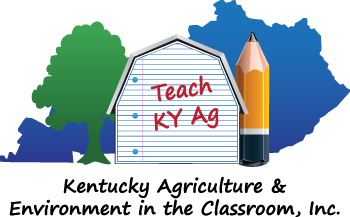Third Grade ELA
Reading Standards for Informational Texts
Books for group reading are suggested in many lessons. Teachers/educators may ask questions to evaluate student understanding of the text.
RI.3.1 - Ask and answer questions, and make and support logical inferences in order to construct meaning from the text.
RI.3.2 - Identify and cite relevant implicit and explicit information from a summary to determine the central idea of a text.
RI.3.3 - Describe the relationship between individuals, a series of historical events, scientific ideas or concepts, or steps in technical procedures over the course of a text.
RI.3.4 - Determine the meaning of general academic words and phrases in a grade-level text, and describe how those words and phrases shape meaning.
RI.3.5 - Identify and describe informational text structures, including comparison, cause/effect, and problem/ solution structures, and describe the logical connection between particular sentences and paragraphs in a text and how they contribute to the overall structure.
RI.3.6 - Distinguish their own perspective from that of the author of a text, and describe how various perspectives shape the content and style of a text.
RI.3.7 - Identify and explain how specific visuals, including but not limited to diagrams, graphs, photographs, and sidebars, contribute to the meaning and clarity of a text.
RI.3.8 - Describe how reasons and evidence support specific claims the author makes in a text.
RI.3.9 - Explain the relationship between information from two or more texts on the same theme or topic.
RI.3.10 - By the end of the year, flexibly use a variety of comprehension strategies (i.e., questioning, monitoring, visualizing, inferencing, summarizing, using prior knowledge, determining importance) to read, comprehend and analyze grade-level appropriate, complex informational texts independently and proficiently.
Composition Standards
See the Kentucky Farms Feed Me Passport for Grades 2+. There are many writing prompts to meet these standards. Request passports. Learn more about the virtual field trips.
C.3.1 - Compose opinion pieces using a combination of writing and digital resources, on topics or texts, with supporting reasons. (NOTE: Students must have the opportunity throughout the year to utilize digital resources, but not every writing experience must utilize those digital resources.)
C.3.2 - Compose informative and/ or explanatory texts using writing and digital resources to examine a topic and provide information. (NOTE: Students must have the opportunity throughout the year to utilize digital resources, but not every writing experience must utilize those digital resources.)
C.3.3 - Compose narratives using writing and digital resources to develop real or imagined experiences or multiple events or ideas using effective techniques, descriptive details, and clear sequences. (NOTE: Students must have the opportunity throughout the year to utilize digital resources, but not every writing experience must utilize those digital resources.)
C.3.4 - With guidance and support from adults, use digital resources to create and publish products, as well as to interact and collaborate with others.
C.3.5 - Conduct short research projects that build knowledge about a topic.
C.3.6 - Summarize information from experiences or gather information from print and digital sources; take brief notes on information from various print/digital sources; and analyze by sorting into appropriate categories.
C.3.7 - Compose routinely over extended time frames and shorter time frames for a variety of tasks, purposes, and audiences.
Language Standards
L.3.1 - When writing or speaking, demonstrate command of the conventions of standard English grammar and usage.
Explain the function of nouns, pronouns, verbs, adjectives, and adverbs in a grade-level text.
Form and use regular and irregular plural nouns.
Use abstract nouns.
Form and use regular and irregular verbs.
Use verb tenses.
Ensure subject-verb and pronoun-antecedent agreement.
Form and use comparative and superlative adjectives and adverbs, and choose between them depending on what is to be modified.
Use coordinating and subordinating conjunctions.
Produce simple, compound, and complex sentences.
L.3.2 - When writing:
Capitalize appropriate words in titles.
Use commas in addresses.
Use commas and quotation marks in dialogue.
Use possessives.
Use conventional spelling for high-frequency words where suffixes are added to base words.
Use spelling patterns and generalizations in writing words.
Consult reference materials as needed to check and correct spelling.
L.3.3 - Use knowledge of language and its conventions when writing, speaking, reading, or listening.
Choose words and phrases for effect.
Recognize and observe differences between the conventions of spoken and written Standard English.
L.3.4 - Determine or clarify the meaning of unknown and multiple-meaning words and phrases based on grade 3 reading and content, choosing flexibly from an array of strategies.
Use sentence-level context as a clue to the meaning of a word or phrase.
Determine the meaning of the new word formed when a known affix is added to a known word.
Use a known root word as a clue to the meaning of an unknown word with the same root.
Use glossaries or beginning dictionaries to determine or clarify the precise meaning of keywords and phrases.
Acquire and use accurately grade-appropriate conversational, general academic, and domain-specific words and phrases, including those that signal spatial and temporal relationships.
L.3.5 - Demonstrate understanding of word relationships and nuances in word meanings.
Distinguish the literal and nonliteral meanings of words and phrases in context.
Demonstrate understanding of words by relating them to their synonyms and antonyms.
Distinguish shades of meaning among related words that describe degrees of certainty.
